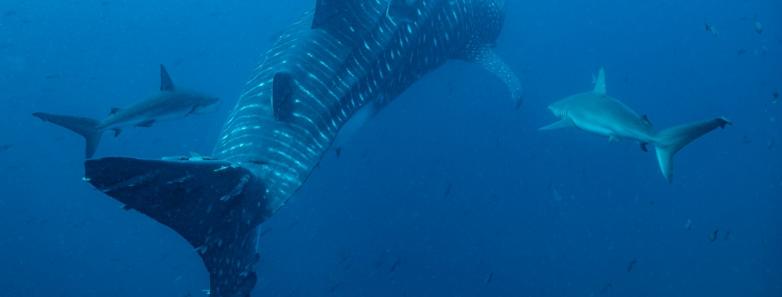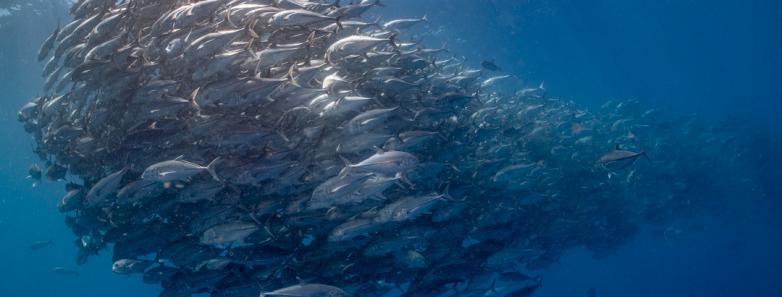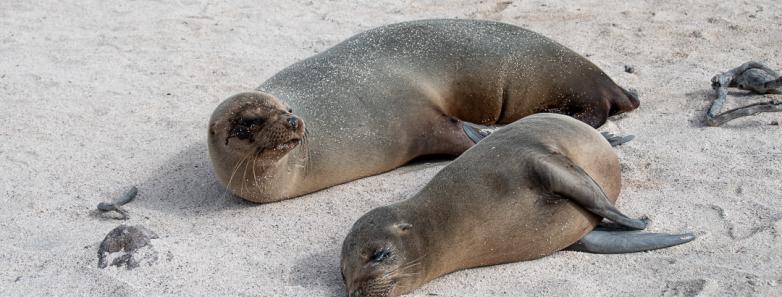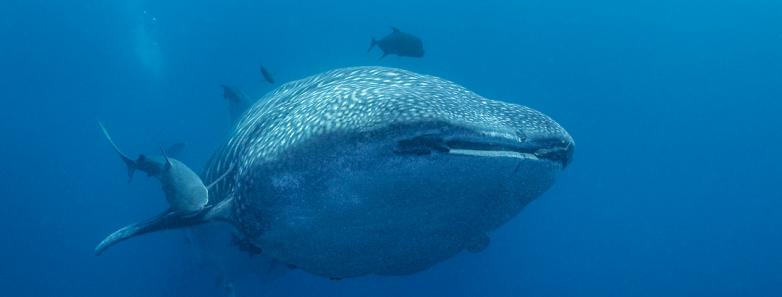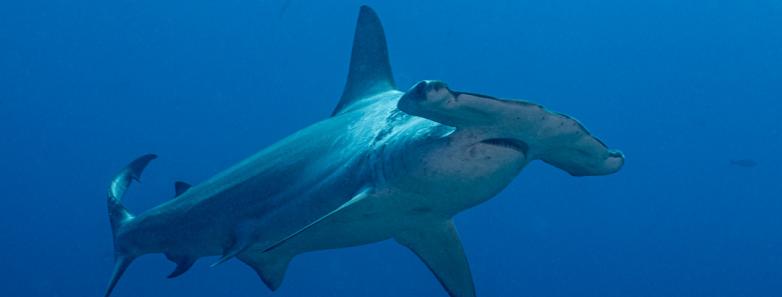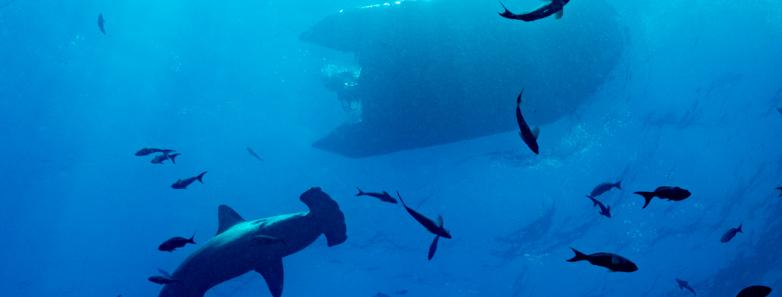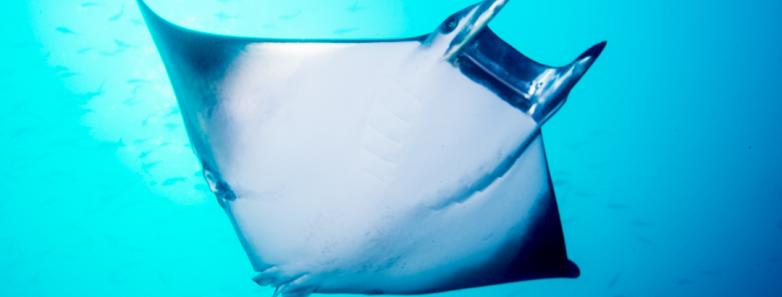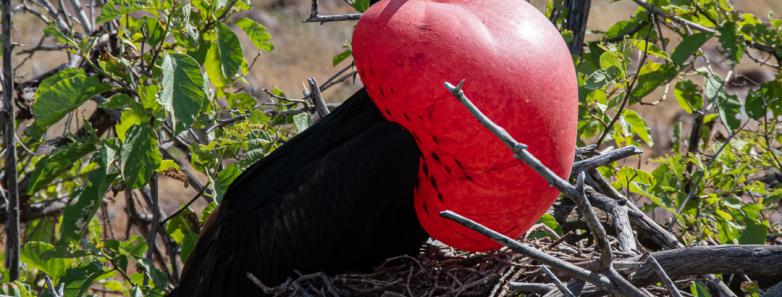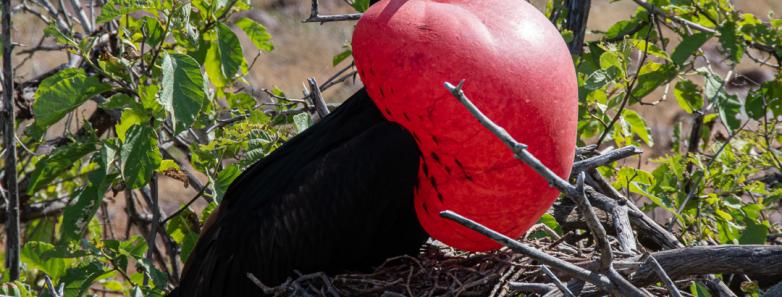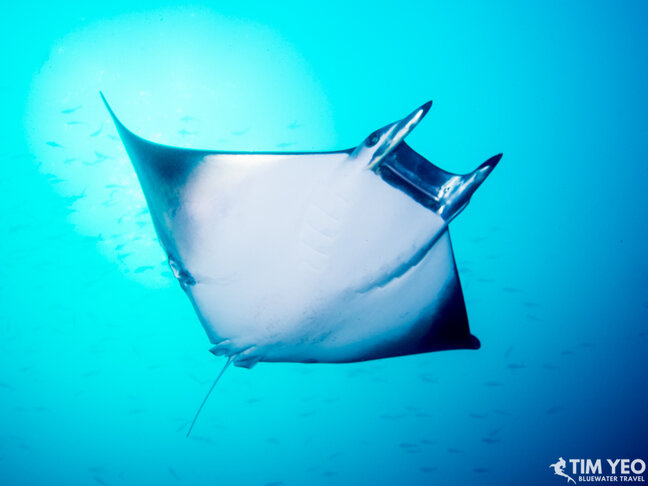Scuba Diving Galapagos, Ecuador
A bucket-list destination for all divers, scuba diving Galapagos Islands is an unforgettable experience. Divers seeking encounters with big marine life, rare animals found only in the area, and the most sensational underwater photography opportunities imaginable will find everything they are looking for and more while scuba diving Galapagos Islands.
Galapagos Diving Highlights
The scuba diving in the Galapagos Islands is best known for its BIG and RARE marine life. Think lots of hammerhead sharks and 30+ other species of sharks, the ultra-rare marine iguana, manta rays, turtles and many more. If you dive at the right time, you'll be surprised with the number of "bucket list" marine animals that you can cross off your list within a week of Galapagos scuba diving.
Interested in diving Galapagos? View the live availability of some of the best liveaboards in the Galapagos and book online at the best price or check out our sidebar for specials and workshops!
Jump to:
Marine Life - Best Dive Sites - Best Time to Dive
Diving Conditions - How to Get There - How to Dive Galapagos
NEW! Find a Liveaboard - Practical Information - Book a Trip - Underwater Images
Galapagos Liveaboards & Dive resorts
Scuba diving the Galapagos Islands via liveaboard is the only way to dive all the best spots in a single visit. Some of the best dives in Galapagos are located at the remote Wolf and Darwin Islands, which would be notoriously difficult, if not impossible, to get to without a Galapagos diving liveaboard. Most liveaboard trips to the Galapagos last 7 nights, and would typically include a land tour to visit various endemic land animals.
View Galapagos liveaboard live availability and book online at the best price.
Intro to the Galapagos
The Galapagos are volcanic islands in the Pacific Ocean, made famous by Charles Darwin and the National Park that protects them. Situated about 500 nautical miles (925 km) off the coast of Equador, the Galapagos are situated on the equator.
There are 18 islands in total, with the favorite dive spots being Wolf and Darwin Island, arguably the best dive destination in the world for pelagic life! The islands' isolation has led to unique evolution among the flora and fauna (eventually prompting Darwin to publish The Origin of Species) leading the Ecuadorian government to declare the Galapagos archipelago a national park in 1959.
The red balloon frigate. The land excursions in Galapagos are not to be missed!
It has subsequently been recognized as a UNESCO World Heritage Site, which is great news for creatures like the Galapagos giant tortoise and the blue-footed booby, as well as the rich marine life making their home in the islands' surrounding waters.
Each Galapagos scuba diving liveaboard is given set itineraries by the government, which allow divers a wide range of dive opportunities. There are also "traditional" cruises through the islands with snorkeling, hiking, and other non-dive activities, as well as several hotels in Puerto Baquerizo Moreno (Isla San Cristobal) and Puerto Ayora (Isla Santa Cruz) offering land-based diving. If you like big fish and aren't afraid of a thick wetsuit, scuba diving Galapagos Islands is a must.
View Location on Google Map
WHEN TO scuba dive galapagos
Scuba diving in Galapagos Islands is available year-round, but the best time to go would highly depend on what you want to see and your tolerance for cold water.
More on the best time to dive Galapagos
Learn all there is to know about Galapagos and see if this is the destination for you!
Galapagos Diving information
With no shortage of interesting dive sites and marine life encounters, scuba diving Galapagos always impresses even the most seasoned and well-travelled divers! Read on for more information about marine life, diving conditions, and Galapagos dive sites.
Galapagos Marine Life & Photography Subjects
The Galapagos Islands are one of the top destinations for seeing large marine life native to warm and cold water climates. The Galapagos is also home to some of the best shark diving in the world! While Galapagos is indeed a wide-angle photographer's paradise, you shouldn't leave the macro lens at home. Lots of small critters can be found at various dive sites. Grab your underwater camera housing and let's go!
Among the many unusual highlights while scuba diving in the Galapagos are marine iguanas, found underwater munching on algae and seaweed. They can reach 4-5 feet (1.2 - 1.5 meters) in length! Each island has unique species, which have evolved independently from their land-based counterparts in South America.
List of some of the marine animals that you'll likely to see in Galapagos:
- Whale shark
- Hammerhead sharks
- Silky sharks
- Galapagos sharks
- Reef sharks
- Eels
- Manta Rays
- Dolphins
- Sea lions
- Turtles
- Marlin
- Large schools of fish
- Marine iguanas
- Frogfish
- Octopus
- Seahorses
- Nudibranchs
Best Time to scuba Dive galapagos
The best time to scuba dive Galapagos highly depends on what you'd like to see! The diving season in Galapagos is generally divided into two categories: Whale Shark Season (June-November) and Manta Season (December-May) when it's slightly warmer.
Manta Ray drifting overhead during our 2019 group trip to Galapagos.
During the warmer Manta Season (December-May) the schools of hammerheads are generally larger and giant manta rays may be found off Isabela island. There is also some interesting mating behavior with the marine iguanas and world-famous blue-footed boobies. And, being the warm season, ocean surface conditions are calmer (for a smoother boat experience) with sunshine.
May is an awesome time for scuba diving Galapagos. It's one month earlier than the "official" whale shark season, but there's still a good chance to see whale sharks.
Whale shark. Captured by Mark Strickland during our group trip in April 2022.
During the colder Whale Shark Season (June-November) the gentle giants come to feed on the plankton off Wolf and Darwin Islands. Fish life is also much more active due to the increased levels of nutrients in the water. On the downside, conditions may be rougher on the boats with limited sunshine.
The decision is ultimately yours, but feel free to ask us about our experiences during the different seasons. We've been booking and running successful trips to the Galapagos for many years and can give you recommendations based on your preferences!
Interested in underwater photography? Check out next Galapagos Photo Workshops in April 2024 and May 2025. Daily workshops provided by photo pros at no extra cost!
galapagos Diving Conditions
- December - May: This is the warm season in the Galapagos with the highest water and air temps. Brief afternoon rain showers are common but expect the tropic sun to reappear after the rain. Water temperature is 70-86F (21-30C) with some cooler thermoclines at depth. The northern islands are generally colder. Visibility stays between 40-100 feet (12-33 meters).
- June - November: This season is known as the guarua and is cooler with frequent mist and overcast days. Winds can create rougher seas at times. Water temperature is 60-75F (16-24C). While colder, the trade-off is the rich currents bringing nutrients into the islands, resulting in more abundant marine life. Visibility is slightly less as a result.
Galapagos diving difficulty
Galapagos scuba diving is for advanced divers. Not only is the water cold enough to warrant a 5mm or 7mm wetsuit, but there can be strong currents, choppy water, and other conditions requiring experience beyond casual open-water certification.
Most divers visit the islands on liveaboards, which use small inflatable boats to access specific dive sites. Galapagos liveaboards vary in the number of dives offered per day, and also the number of dives at Wolf and Darwin Islands (popular for pelagics and seasonal whale sharks). Most Galapagos dive trips are now 8 days and 7 nights, offering 21 - 22 dives. Most boats will do 4 dives a day, including a night dive.
Best Dive Sites in the Galapagos
Based on our numerous visits to the area, we've rounded up some of the best dive sites in Galapagos:
El Arco, Darwin Island – You can see schooling hammerheads, whale sharks and spotted eagle rays along with prowling Galapagos and silky sharks. It’s only accessible by liveaboard.
El Arenal, Darwin Island – Darwin’s Arch is a distinctive stone arch above the water and this dive site slopes off the arch. The site's marine life in incredibly rich. Big-eye jacks along with hammerhead, blacktip and whale sharks all frequent the area.
Find out why we think Darwin Island is one of the best dive sites in the world!
Roca Redonda, Isabela Island – This dive site is the tip of an underwater volcano that rises from the sea floor and emerges as an island. You can expect to find Galapagos sharks, schools of hammerhead sharks and barracudas.
Cape Douglas, Fernandina Island – Thi is a great spot to watch penguins “fly” past. Fur seals and Galapagos sea lions, as well as marine iguanas, can also be seen.
Pitt Point, San Cristobal Island – This is an exposed rock at the most northeasterly point of the island. It's likely that you'll meet schools of snapper, grunt, and jacks. You might also see diving boobies.
Camaño Islet, Santa Cruz Island – This is a usually calm spot that allows you to see batfish, seahorses, groupers, sharks and sea lions. If you're lucky, you might also find marine iguanas diving beneath the waves searching for food.
Galapagos travel information
Getting there may seem more complicated than some destinations, but rest assured, the travel is worthwhile to experience scuba diving Galapagos. Just be sure to plan your flights so you arrive early to mitigate the risk of missing your Galapagos liveaboard departure.
How to Get to the Galapagos
You can fly internationally into Mariscal Sucre International Airport (UIO) in Quito or José Joaquín de Olmedo International Airport (GYE) in Guayaquil, both in Ecuador.
Most liveaboard trips depart from either San Cristobal (SCY) or Isla Baltra (GPS). Daily airline transfers available from Guayaquil to both locations, with an easy transfer flight from Quito available (stay on the same plane).
It's recommended to fly into either Quito or Guayaquil 1-2 days before your liveaboard transfer since there are morning departures only, which don't sync up with arriving international flights. The flight to the Galapagos is about 2 hours.
Both Quito and Guayaquil have a wide range of hotel accommodations and plenty to explore while staying there. Quito is the capital city of Ecuador and a UNESCO heritage site at 7,900 feet in the Andes. The Mariscal Sucre is a popular part of the city for visiting tourists, however, it is 45-60 minutes from the airport. The Malecon in Guayaquil is popular with tourists, situated right on the Rio Guayas.
How to scuba Dive Galapagos
For serious divers, we strongly recommend booking a liveaboard trip to Galapagos. Liveaboards will provide the most variety in dive locations and are the only way to access the famous Wolf and Darwin Islands. Land-based diving is available with 2-tank morning dives, however, the dive sites are limited in range from the port.
Here at Bluewater Travel, we run guided trips and photo trips to the Galapagos every year. Our trips are carefully planned to hit the best diving spots during the best time of year. Daily photo workshops by photo pros are provided at no extra cost.
Our travel advisors can help you plan everything from A to Z and our trip leaders will be there to make sure that your vacation runs smoothly. All that at no additional cost to you!
See all Galapagos liveaboards, view our next dive trips to the Galapagos or contact us to start planning your dream trip!
Other things to do in galapagos
While scuba diving Galapagos is the most sought-after activity, most Galapagos liveaboards include several land excursions during the trip that shouldn't be missed. These are opportunities to see land-based birds, penguins, and the famed Galapagos giant tortoises. The non-dive activities differ depending on the trip itinerary and season, so be sure to check the specific itinerary of your trip for the land excursion details.
Check out Komodo Island diving for another unique destination with fantastic topside wildlife and great diving.
Liveaboards in Galapagos
Galapagos liveaboards offer divers the largest range of dive sites, animal encounters, and are by far the best way to experience this natural paradise. Read on for more information regarding the best Galapagos liveaboards available.
See the availability of liveaboards in Galapagos and book online. Best price guaranteed. No credit card fees.
The rates shown below are per person in USD. Some operators may quote in a different currency and the final pricing may vary depending on the latest exchange rates.
Please contact us for the latest availability of the Blue Spirit Galapagos.
Other Useful Information
Travel to a new region requires a bit of practical knowledge, and the team at Bluewater Travel is here to help you with all the details for scuba diving Galapagos. Don't see what you're looking for? Contact us and our team will be happy to assist.
Practical Information
- Currency: US Dollar
- Language: The predominant and official language of Ecuador is Spanish. English is the most spoken foreign language amongst tourist providers and professionals.
- Main Airport Code: GPS
- Time Zone: UTC-5
- Electricity: 120 V 60 Hz
GOT QUESTIONS? READY TO BOOK?
Call us today at +1-310-915-6677 or email us info@bluewaterdivetravel.com
And let us book your dream vacation!
Underwater Images
More Galapagos underwater videos:
Epic 4-minute must see video from our Feb 2016 trip, with countless hammerheads, Mola mola, marine iguanas, penguins.
Hammerheads at Wolf island - a great video taken by diver Andy Phillips on a rebreather.

